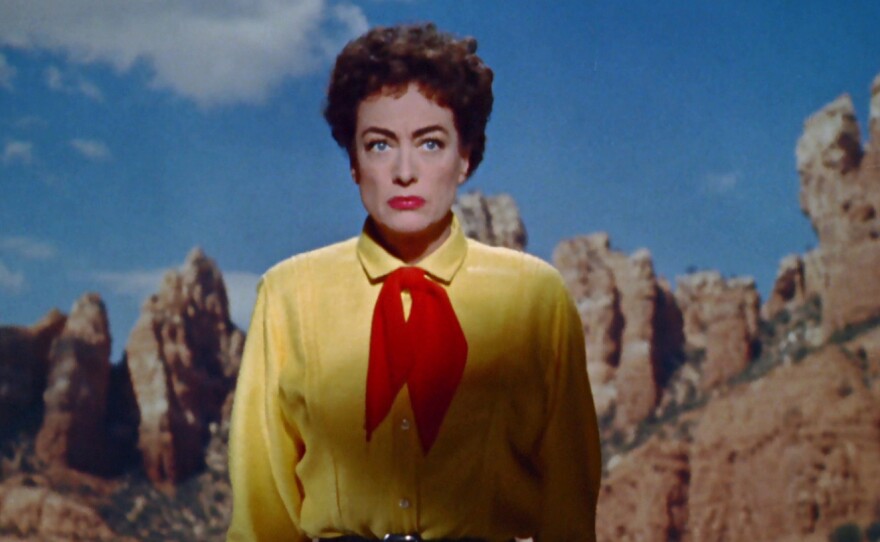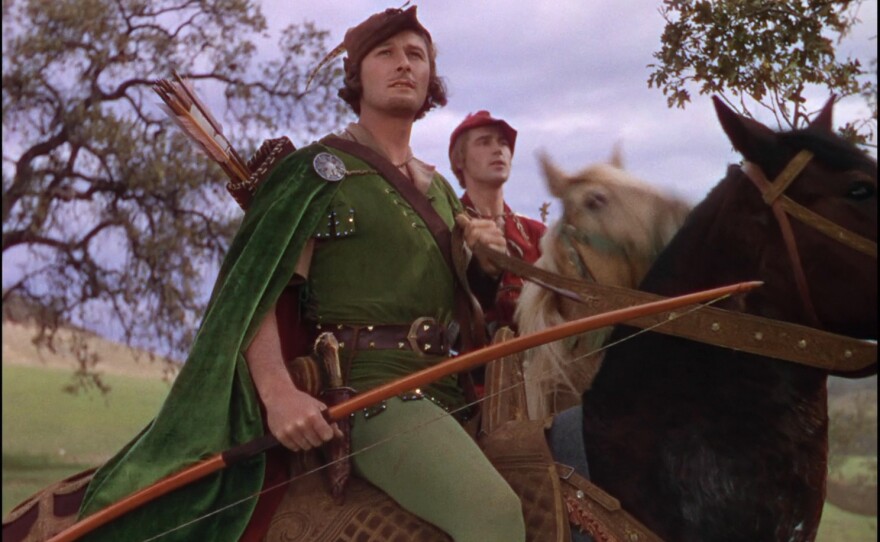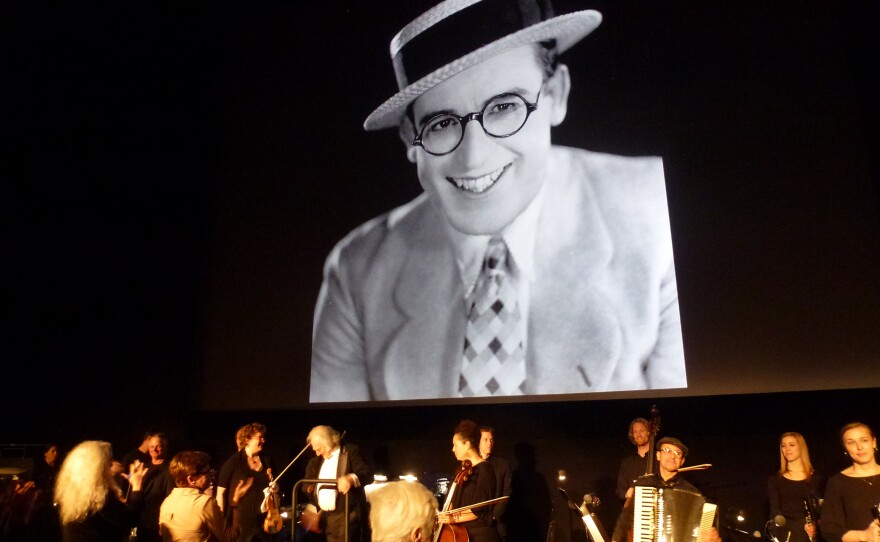Over the weekend I attended my first Turner Classic Movies Film Festival in Hollywood. Pure ecstasy.
The 2014 TCM Film Festival reminded me of the thrill and wonder of going to the movies. Going to a new, contemporary movie, you never know what you'll get and you frequently have to wade through a lot of crap to find that gem. But with a festival devoted to film classics, you know that everything you see is likely to be amazing because we are taking just the cream of the crop. So I basically spent the last four days radiant in the glow of wondrous films flickering on a big screen.
Turner Classic Movies (TCM) is celebrating its 20th anniversary on the air this year. The film festival just finished its fifth year. Both are dedicated to preserving and presenting classic cinema, as well as introducing it to new audiences. The four-day event attracted film fans of varying ages, backgrounds, and depth of passion. After attending all four days, seeing 16 films, and posting hundreds of Tweets, I have a few observations to make.
Film Selection and Format
First, if you love movies and are a fan of the TCM on-air programming, you should put the 2015 TCM Film Festival on your calendar now. The festival is like heaven for film lovers. The films selected this year represent a perfect mix of familiar classics, rare treats, restored prints, and under-appreciated gems. The programmers (including UCSD alum Charles Tabesh) take great care to present a good percentage of films on 35mm film prints, even having prints struck specifically for the festival. And if the film is presented digitally, they make sure that what screens is of the highest quality. That means films are not merely digital transfers but carefully restored works. The notion of restoration is key here. What you might find on Bluray in stores is likely just a digital transfer designed to get a title into a format that’s more marketable, and the transfer often makes the image so crisp that visual effects show their seams or so bright that scenes meant to be in shadows no longer have any nuance. TCM gives its audience glorious digital restorations that return a film like “Johnny Guitar” to its original bold color or present the original Toho “Godzilla” with improved subtitles and gorgeously detailed black and white. So the festival scores high marks on its film selection and format.

Festival Logistics
It is also a well run event. The schedule may force attendees to make tough choices between multiple films screening at multiple venues but the schedule is not so jammed that you can’t find time to eat or go to the bathroom. The multiple venues are also within walking distance of each other and of the home base of the Roosevelt Hotel. Waiting times are made reasonable by strict adherence to some rules: You can only line up an hour before the film at which time you get a number and can leave and come back 30 minutes before the screening starts. In addition, people in line were friendly and eager to talk about films so waiting in line was never a problem. It also allowed my friend and podcaster Miguel Rodriguez to do a little stop motion animation with my kaiju earrings while we waited for “Godzilla.” There were also a pair of midnight screenings because true film geeks like nothing more than late night cinematic adventures.

The only complaint I had was that at a couple screenings, the reserved seats for VIPs and high-paying pass holders looked to be more than half the theater. So when my friend and I got number one and two in line for “Godzilla: The Japanese Original,” we were a little disappointed that when we were let in, it was already tough to find seats.
Film Programming
Now to the movies. My father is the one who provided the right environment for me to fall in love with movies. He always talked about how big an event going to the movies was and how wonderful films like "King Kong" (1933) were. When I was young he took me to the old Cinema Leo in Pacific Beach where you would lie down on the sloped, carpeted floor to watch classic movies. I saw “The Adventures of Robin Hood,” “Arsenic and Old Lace,” and the Marx Brothers there for the first time and it was on a big screen that covered the wall from floor to ceiling, wall to wall. He also kept me home from junior high school once so I could watch “On the Waterfront” and “Tom Jones.” This was back in the day when there were no VCRs, no DVDs and no Netflix or YouTube. But that was the foundation for my love and obsession with film.

The 2014 TCM festival screened “The Adventures of Robin Hood” in all its Technicolor glory and I almost cried with joy because it reminded me how this was one of the films that made me fall in love with the movies. How could you not be swept away by the story, the dashing Errol Flynn, the beautiful Olivia DeHavilland, the rousing score by Erich Wolfgang Korngold, and the lively action? I also realized -- now seeing the film as an adult who’s been through divorce and online dating – how Hollywood fostered a lot of false expectations for me. Oh I know, movies are fantasies and I can’t expect to find an Errol Flynn to sweep me off my feet or a William Powell (in “The Thin Man”) to be the wittiest and most sophisticated hubby. But dammit, it did make me hope.
On the other hand, revisiting a film like “Robin Hood” or "A Matter of Life and Death” (aka “Stairway to Heaven” in the U.S.) did remind me that these film classics can always make me feel like I did when I first saw them, rekindling an innocence in me and reminding me how I felt at eight or 12 looking up at the screen in awe and being transported to a different world. The TCM fest reminded me how important it is to preserve these films and the memories –different for each person – that they can hold.

Presentations
TCM also ups the ante by having excellent presentations before the films. The one before “Robin Hood” was phenomenal. Hosted by Craig Barron and Oscar-winning sound designer Ben Burtt, the presentation carefully explained the three-strip Technicolor process, how matte paintings work, and how the exceptional sound of the arrows was created for the film. It was both lively and informative. That typified most of the introductions. Rialto Pictures’ Bruce Goldstein gets top marks for being the most polished, entertaining, informative, and just plain fun presenters. His Pre-Code 101 presentations was one of the festival’s highlights. There were also some unexpectedly good people like playwright and filmmaker Charles Busch at “Whatever Happened to Baby Jane?,” comedian Patton Oswalt at “Eraserhead,” and comedian Dana Gould at “Freaks.” Also noteworthy was editor Thelma Schoonmaker introducing her late husband Michael Powell’s film, “A Matter of Life and Death.”
The only bad introduction was by director of UCLA Film and Television Archives Jan-Christopher Horak. He came up with Arianne Ulmer Cipes to introduce, “Her Sister’s Secret,” made by her father Edgar G. Ulmer She was great but Horak did not seem to have anything prepared, and didn’t make good use of his guest. He rambled about the film and when someone asked what he meant by “PRC,” he curtly replied, “Producers Releasing Corporation,” but did not explain what that was or how it figured in Ulmer’s career. Also disappointing was author Nancy Schoenberger speaking about “The Quiet Man.” She described so many scenes that you could hear the audience rumble with disapproval about her spoiling the best moments. She may have made the mistake of thinking that as TCM fans, attendees had seen the film already. But at multiple screenings, I was surprised that when asked, about half the audience had not seen films like “A Hard Day’s Night,” “Eraserhead,” and “Godzilla.”
New Discoveries
I want to highlight a few of the films I saw in the hopes that you will seek them out on DVD or BluRay or look for them to possibly pop up in TCM programming. Top of the list has to be “On Approval,” a 1944 British comedy of manners co-adapted by Terence Young (one of the James Bond film directors). I had never heard of the film (I love making these kinds of discoveries) and it was witty and brilliant. If there had been DVDs outside the theater I would have bought a dozen to give away to friends and family immediately. And I had to watch this from the worst seat in the house in the front row far right so everything onscreen looked tweaked out of proportion. And even with that I was enamored with the film from its opening shot and line.
Next would be the pre-code film, “Employees’ Entrance” starring Warren William as a man you love to hate and a lovely Loretta Young. Pre-code refers to films mostly made between 1931 and 1934, before the strict enforcement of Motion Picture Production Code. These films are surprising and remarkable for their sexual innuendo, illegal drug use, promiscuity, prostitution, infidelity, abortion, intense violence, and homosexuality. During this time women could have affairs onscreen and not have to pay a price; a ménage à trois was an acceptable arrangement, and actresses just seemed to have better roles. “Employees’ Entrance” was another film I had never heard of. It crackled with snappy dialogue and moved at a quicksilver pace. I was quite pleased that my decision to go with completely unknown quantities rather than favorite films proved immensely rewarding.
Another key component of the festival is silent films, and silent films with live music. This year there were two films presented with new, live scores: Harold Lloyd’s “Why Worry?” and Alfred Hitchcock’s “The Lodger.” Both were amazing.
I only saw a fraction of the films that screened and none of the tribute programming, so this is merely one small perspective on the festival. But the experience has hooked me. Sometimes I get so focused on reviewing the newest films, that I forget to remember some of the classics as well as older films that have been ignored or hard to find in watchable condition.
This year’s festival is over but you can continue the festival experience by tuning into TCM for great film programming and joining TCMParty on Twitter to continue the community spirit of the festival experience.







